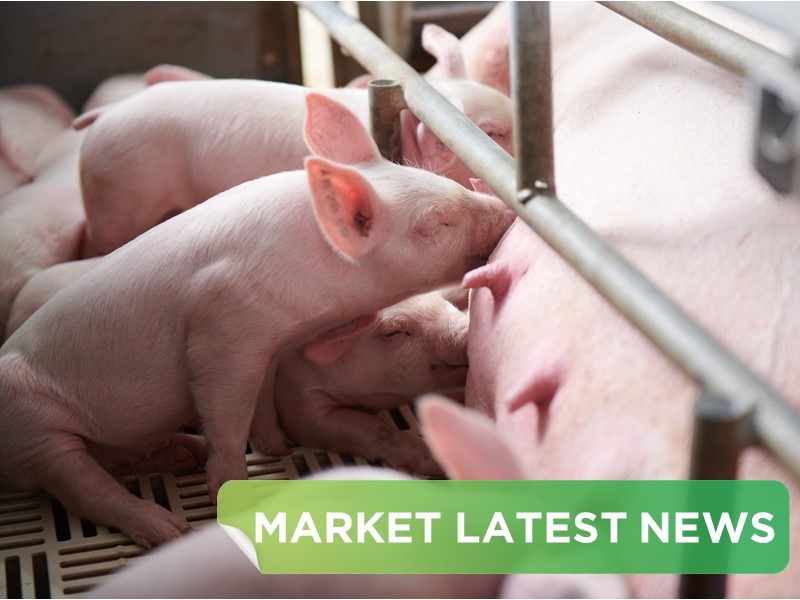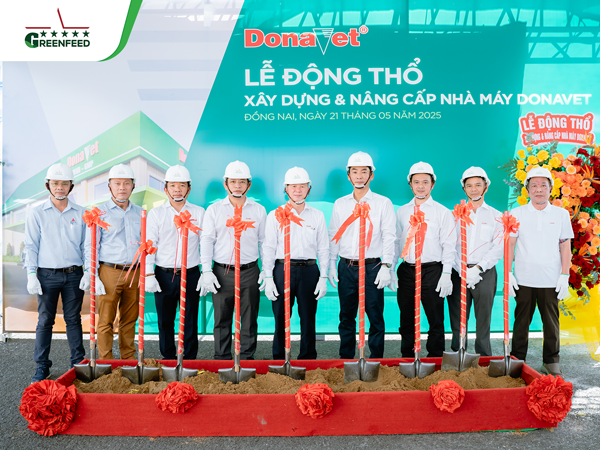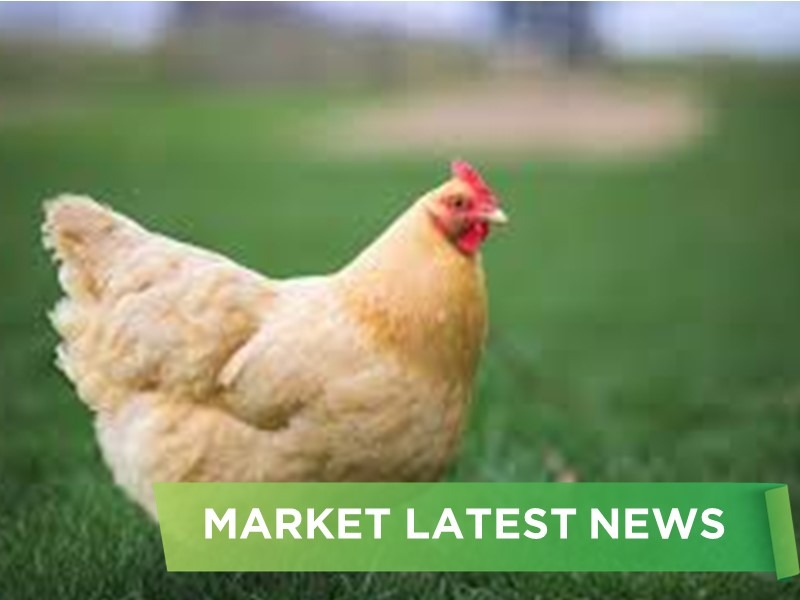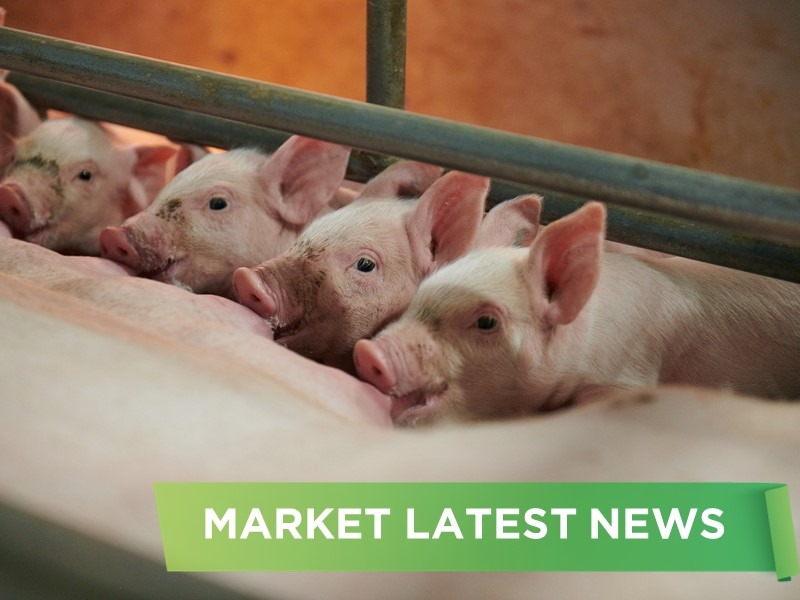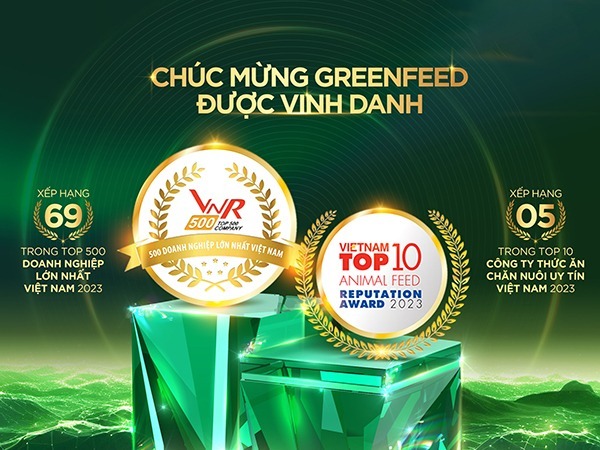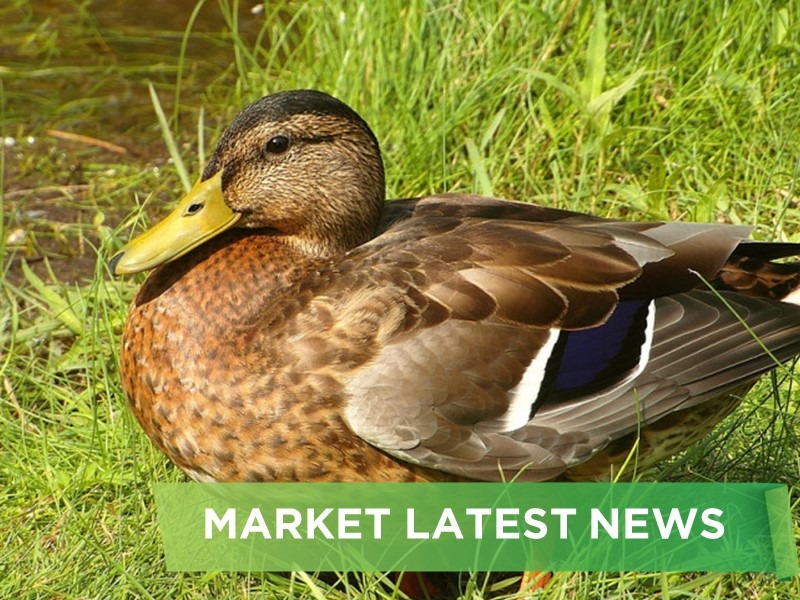Highlights of the livestock industry in 2024
1. Relatively stable livestock farming, good prices for most livestock products
In 2024, the market and prices of the main livestock products will be maintained at a level that is beneficial to livestock farmers. The total herd and output of livestock products will continue to grow compared to 2023. According to estimates from the General Statistics Office, the pig herd will reach 26.59 million heads, up 4.1% over the same period in 2023; the poultry herd will be about 575.1 million heads, up 2.8% over the same period in 2023. Buffalo and cattle farming will continue to decline, of which the total buffalo herd will be about 2.07 million heads, down about 3.0%; The herd of cattle is about 6.29 million, down 0.6% compared to the same period in 2023.
In particular, the price of live pigs is stable at over 60,000 VND/kg, sometimes approaching 70,000 VND/kg, along with the decrease in the price of feed ingredients, which has been helping farmers make a profit, creating motivation for farmers to restore their herds.
2. Livestock industry suffers 1,000 billion VND in damage due to storm Yagi
Storm No. 3 (Yagi) and floods occurring in September 2024 were concentrated in some localities: Hai Phong, Quang Ninh, Yen Bai, Hanoi, Thai Nguyen... causing 22,800 cattle and more than 3 million poultry to die or be lost due to the storm. Production infrastructure serving the livestock industry including: barns, machinery, factories, production tools... was severely damaged. The total estimated damage of the livestock industry is up to 1,000 billion VND. After the storm, many units and organizations provided cash and in-kind support worth up to VND 170 billion (of which, the total value of support commitment in the livestock sector alone was about VND 77.5 billion) for damaged farms and breeders.

Storm Yagi caused heavy damage to the livestock industry
3. Prices of animal feed and feed ingredients continue to decrease sharply
In 2024, the output of industrial animal feed in 2024 is estimated at 21.5 million tons (an increase of 3.4% compared to 2023), of which animal feed for pigs accounts for 55.3% (11.9 million tons); animal feed for poultry accounts for 40.9% (8.8 million tons); the remaining 3.7% is feed for other animals. It is estimated that in 2024, our country will import nearly 22.4 million tons of animal feed ingredients, equivalent to 7.7 billion USD. In 2024, the prices of most animal feed ingredients tend to decrease compared to the same period in 2023, of which: Corn decreased the most (down 15.7%); soybean meal decreased by 10.6%; rice bran decreased by 7.9%; Lysine HCL decreased by 11.5%. From there, the price of finished animal feed products also decreased. Specifically: Animal feed for pigs (fattening from 60kg and above) decreased by 6.9%; Animal feed for broilers (colored feathers) decreased by 5.0%; Animal feed for broilers (white feathers) decreased by 5.3%. This helps farmers reduce input costs and improve farming efficiency.
4. Diseases remain the greatest threat
In 2024, epidemics in livestock and poultry will be actively controlled by localities, so no major epidemics will occur for dangerous infectious diseases (avian influenza, foot-and-mouth disease, blue ear disease, lumpy skin disease in buffaloes and cows, etc.). African swine fever in particular remains complicated due to poor control of biosafety livestock farming, low vaccination rates, and uncontrolled transportation and circulation, especially smuggling across the border. Since the beginning of the year, there have been 1,575 outbreaks nationwide, with 89,341 pigs dead and culled. Currently, the country has 71 outbreaks in 44 districts of 18 provinces and cities that have not passed 21 days. Compared to the same period last year, the number of outbreaks increased by 78.97%, and the number of pigs that had to be culled increased by 2.13 times.
5. Strongly handle environmental violations in livestock farming
In 2024, many localities across the country have drastically handled environmental pollution in livestock farming, promoting the relocation of unsuitable facilities, typically in the provinces of Dong Nai, Thanh Hoa, Nghe An, Hanoi... Many businesses have been fined and forced to stop raising livestock to overcome the situation of discharging waste into the environment.
Most businesses investing in livestock farms today have invested systematically in waste treatment systems, applying cold barns, closed barns, biological bedding and reusing waste as fertilizer. This not only helps improve the environment, but also creates a foundation for our country's livestock industry to develop in a modern, sustainable and environmentally friendly direction.
6. For the first time, land in livestock farming is included in the Land Law
On the morning of January 18, 2024, the National Assembly passed the Land Law (amended). The Land Law (amended), effective from January 1, 2025. At point d, clause 2, article 9 of the Land Law (amended), there is an additional section on land for concentrated livestock farming (the 2003 Land Law only has grassland land for livestock farming). This is the result of many efforts by competent agencies and Associations/Unions in the livestock farming sector.
Previously, in 2023, the Vietnam Livestock Association, together with the Large Livestock Association and the Vietnam Poultry Association, had carefully prepared and timely submitted proposals to the National Assembly and the Ministry of Natural Resources and Environment to supplement land for livestock farming.
7. “Hot” issue of greenhouse gas inventory in livestock farming
After the petition from the Vietnam Livestock Association (May 2024) and the Ministry of Agriculture and Rural Development, Deputy Prime Minister Tran Hong Ha signed a new Decision promulgating the list of sectors and facilities emitting greenhouse gases that must conduct updated greenhouse gas inventories in August 2024. According to this decision, livestock facilities are not currently on the list of mandatory greenhouse gas inventories.
Accordingly, the Vietnam Livestock Association has proposed that the Ministry of Natural Resources and Environment not include the livestock sector in the greenhouse gas inventory list in the current period, at least from now until 2027, so that management agencies, service units and livestock farmers have more time and conditions to get acquainted, acquire appropriate knowledge and technology, renovate barns and prepare resources to be able to implement these very new and complex issues. However, not being included in the inventory list does not mean that livestock is on the sidelines in reducing emissions.
Recently, Circular 19/2024/TT-BNNPTNT of the Ministry of Agriculture and Rural Development issued on December 3, 2024 stipulates technical regulations for measuring, reporting, assessing greenhouse gas emission reduction and inventorying greenhouse gases in the livestock sector... This shows that the livestock industry must carefully prepare for the Net Zero path set by the Government by 2025.
8. First Decree on improving livestock efficiency
The Government has issued Decree No. 106/2024/ND-CP dated August 1, 2024 stipulating policies to support improving livestock efficiency. The Decree stipulates a number of policies to support livestock development, including: producing animal feed from domestically produced raw materials, developing livestock product markets, supporting the relocation of livestock facilities; Support and incentive policies to improve livestock efficiency include: support for artificial insemination for buffalo, cows, pigs; support for purchasing male breeds of buffalo, cows, goats, sheep, pigs, and sika deer; support for purchasing parent chickens, ducks, and geese; and encouragement for livestock waste treatment. The Decree is the basis for encouraging localities, businesses, and livestock farmers to have the opportunity to access investment support sources for livestock development in general.
9. The Law on Product and Goods Quality and the Law on Technical Standards and Regulations received many comments and consensus from livestock enterprises
The Law on Product and Goods Quality and the Law on Technical Standards and Regulations are the original laws that affect all production and business activities, ensuring the quality, safety, and brand of Vietnamese products and goods.
Currently, all animal feed products must be declared to be in conformity with the provisions of the above two Laws before being circulated on the market. However, the conformity of animal feed has many shortcomings. Because the assessment and sampling to declare conformity at a time is purely a formality, not bringing value to the purpose of controlling the quality of animal feed products. On the other hand, the cost of conformity of animal feed for the whole industry is extremely large, estimated at thousands of billions of VND per year, even some businesses have to pay several billion VND per year... Therefore, businesses and associations in the animal feed sector have boldly proposed to remove the regulation on conformity declaration in the Law on Standards and Regulations and the Law on Product and Goods Quality.
(According to Ha Ngan - Vietnam Livestock Magazine)
